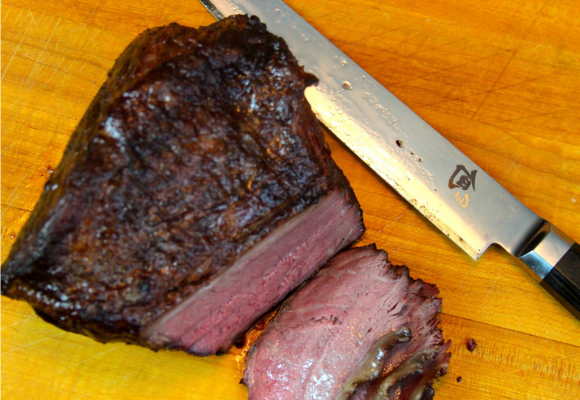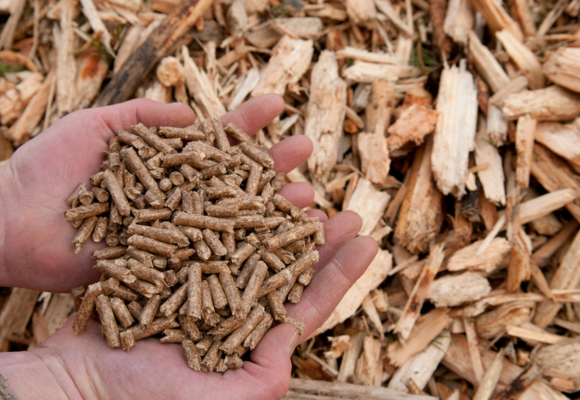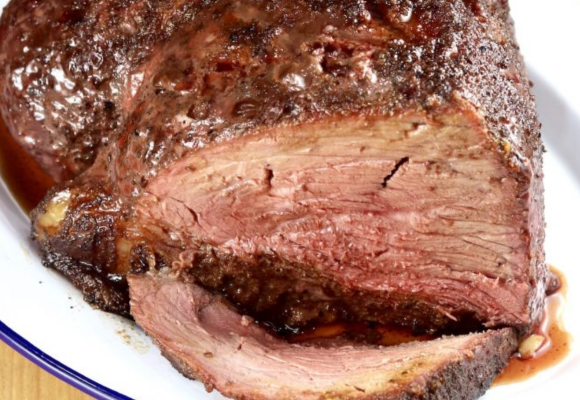The art of culinary smoking has a rich history, intertwining flavor, tradition, and technique. In the diverse world of smoking woods, pear wood emerges as a uniquely subtle yet distinct choice for imparting delicate aromas and flavors. This article delves into the nuances of smoking with pear wood, a method that is gaining popularity among culinary enthusiasts and professional chefs alike. Renowned for its gentle smoke and the ability to enhance rather than overpower, pear wood is transforming the smoking landscape with its understated elegance. Here, we explore the characteristics of pear wood, its compatibility with different foods, and tips for mastering this smoking technique.
What Does Pear Wood Taste Like?
Pear wood, a hidden gem in the world of smoking woods, offers a uniquely mild and sweet flavor profile. It is less intense than traditional options like hickory or mesquite, making it an ideal choice for those who prefer a gentler touch to their smoked foods. The subtlety of pear wood smoke brings out natural flavors without overwhelming them, enhancing dishes with a light, fruity essence that is both distinctive and delightful.
Can I Use Pear Tree Wood for Smoking Meat?

Absolutely! Pear tree wood is an excellent choice for smoking meat. Its mild flavor profile complements the natural taste of meats without overpowering them. This makes it particularly suitable for delicate meats such as poultry, pork, and even fish. The key is to use it judiciously, allowing the meat’s inherent flavors to shine through the gentle smoke of the pear wood.
Are Pear Tree Wood Chips Good for Smoking Purpose?
Pear tree wood chips are fantastic for smoking. They are especially effective in shorter smoking sessions, where their quick combustion can infuse the meat with a subtle yet noticeable fruity flavor. These chips work wonderfully in both traditional smokers and modern grills, offering versatility and convenience to the smoking process.

Pear Tree Wood Chips for Smoking
Pear tree wood chips offer a convenient and effective way to impart the delicate flavors of pear wood to your food. They are ideal for both amateur cooks and seasoned chefs, providing a consistent and easily manageable smoking material. Their size allows for quick ignition and smoke release, making them perfect for both short and long smoking sessions.
What Is Pear Wood Good For?
Pear wood’s gentle flavor profile makes it incredibly versatile. Beyond meats, it is excellent for smoking cheeses, vegetables, and even fruits. Its light smoke can add a new dimension to these foods, enhancing their taste with a unique twist that can transform ordinary dishes into extraordinary culinary experiences.
Can You Use Bradford Pear Wood for Smoking?
While not as commonly used, Bradford pear wood can be employed for smoking. It shares similar characteristics with traditional pear wood, offering a mild and slightly sweet smoke. However, it’s crucial to ensure that the wood is properly seasoned and free of any chemicals or treatments before use.
Other Top Fruit Wood Choices for Smoking Meat
Fruit woods are highly favored in the smoking community for their mild, sweet, and often fruity flavors. They are perfect for those who prefer a subtle smoke taste that complements rather than overpowers the natural flavor of the meat. Let’s explore some top fruit wood choices that can elevate your smoking experience:
-
Apple Wood: Known for its mildly sweet and fruity smoke, apple wood is a classic choice for smoking. It pairs well with almost any meat, especially pork and poultry.Apple wood is a classic choice for smoking, celebrated for its mildly sweet and fruity aroma. It burns slowly and consistently, making it ideal for long smoking sessions. Apple wood pairs exceptionally well with poultry, pork, and even game birds. Its subtle sweetness can also enhance the flavor of smoked cheese.
-
Peach Wood: Peach wood imparts a sweet, slightly tangy flavor to meats. It’s perfect for adding a light, fruity touch to lighter meats.Peach wood imparts a sweet, slightly tangy smoke flavor. It’s less common than apple or cherry wood but is a hidden gem for smoking enthusiasts. Peach wood goes particularly well with poultry and pork, adding a light, fruity essence that doesn’t overpower the meat’s natural flavors.
-
Cherry Wood: Cherry wood provides a rich, sweet smoke with a hint of tartness. It works beautifully with red meats and adds a stunning color to smoked foods.Cherry wood is known for its rich and sweet smoke. One of its unique characteristics is the beautiful mahogany hue it imparts on the meat. It has a slightly stronger flavor than apple or peach wood, making it suitable for beef and pork, as well as poultry. Cherry wood also blends well with other smoking woods for a more complex flavor profile.
-
Apricot Wood: Similar to peach and apple woods, apricot wood offers a mildly sweet smoke. It’s excellent for poultry and pork, providing a subtle enhancement to these meats.Apricot wood is similar to peach and apple woods in its mild and sweet flavor profile. It’s a great choice for those looking to experiment with different fruit woods. Apricot wood is excellent for smoking poultry, pork, and even fish, lending a delicate sweetness that enhances the meat without overwhelming it.
Plum Wood: Plum wood, like cherry, offers a sweet yet slightly more intense flavor. It works wonderfully with darker meats, including beef and lamb, and can also be used to smoke pork and poultry for a unique twist.
Pear Wood: Pear wood is another excellent choice for a subtle, sweet smoke. It’s particularly suited for smoking chicken and turkey, where its light flavor can infuse the meat without masking its natural taste.
Nectarine Wood: Similar to peach and apricot woods, nectarine wood offers a sweet, mild smoke. It’s great for delicate meats like fish and chicken but can also be used with pork for a subtly different flavor.
Fig Wood: Fig wood is a less common choice but offers a unique, mildly sweet smoke. It’s excellent for poultry and pork, adding a distinctively mild fruitiness to the smoked meat.
In summary, these fruit woods provide an array of flavors and intensities suitable for different types of meat. They are perfect for both beginners and experienced smokers looking to add a sweet and fruity touch to their dishes. Experimenting with these woods can lead to delightful culinary discoveries and bring a new dimension to your smoking repertoire.
What Types of Wood Should You Avoid for Smoking Meat

When it comes to smoking meat, the choice of wood is as crucial as the cut of meat or the seasoning used. While many types of wood can enhance the flavor of your smoked meats, there are certain types that should be strictly avoided to ensure not only the quality of flavor but also the safety of the food. Here’s a detailed look at the types of wood you should steer clear of:
#1: Wood With Toxins: Some woods contain harmful toxins that can transfer to food during smoking. Avoid using woods from poisonous trees, such as yew or oleander.
#2: Painted Wood: Painted or treated woods can release harmful chemicals when burned. Always use natural, untreated woods for smoking.
#3: Molded Wood: Wood that shows signs of mold can impart unpleasant flavors and potentially harmful spores to your food. Always use clean, dry wood for smoking.
#1: Wood With Toxins
- Toxic Trees: Certain trees naturally contain toxins in their wood, bark, leaves, and even sap. Examples include yew, oleander, and laburnum. These toxins can leach into the smoke and subsequently into the meat, posing serious health risks.
- Softwoods: Softwoods like pine, fir, spruce, and cedar are rich in sap and terpenes. While some cedar is used for planking, these woods in general should not be used for smoking as they can impart a bitter taste and potentially harmful chemicals.
- Mangrove and Sassafras: Mangrove wood, found in coastal regions, and sassafras can both be harmful. Sassafras used to be popular for smoking but is now avoided due to its carcinogenic properties.
#2: Painted, Treated, or Stained Wood
- Chemical Contamination: Woods that have been painted, stained, or treated with chemicals can release toxic fumes when burned. These chemicals, intended for preserving wood or enhancing its appearance, are not safe for consumption.
- Construction Scraps: Avoid using scraps from construction sites or broken furniture, as these pieces may have been treated or painted.
- Pallet Wood: Although often easily available, pallets are typically treated with chemicals to prolong their life and prevent pest infestation. These chemicals can be harmful when ingested.
#3: Moldy or Rotten Wood
- Mold and Bacteria: Wood that shows signs of mold or rot can introduce harmful bacteria and unpleasant flavors to your smoked meat. Moldy wood can also release spores that are hazardous to breathe.
- Damp Wood: Using wood that hasn’t been properly dried or seasoned can result in excessive smoke and an unpleasant, acrid flavor. Wet wood can also encourage the growth of mold.
#4: Old, Drift, or Green Wood
- Old or Driftwood: Old wood, especially if it’s been lying outside for a while, may be contaminated with dirt, mold, or insects. Driftwood, similarly, can contain salt, which can corrode your smoker and impart an off-flavor to the meat.
- Green Wood: Freshly cut wood, or “green” wood, is high in moisture and can result in an incomplete burn, producing a lot of smoke and an unappealing flavor.
#5: Unknown Woods
- Unidentified Species: If you’re unsure about the type of wood you have, it’s best to avoid using it for smoking. Different woods can have vastly different effects on the flavor and safety of your food.
- Non-Local Woods: Exotic woods might seem appealing, but if you’re unfamiliar with them, it’s best to stick to known, safe varieties.
By avoiding these types of wood, you ensure not only the best flavor for your smoked meats but also the safety and health of those enjoying your culinary creations. Remember, the right wood can make all the difference in achieving that perfect smoky flavor.
conclusion
smoking with pear wood offers a delightful and unique way to enhance your culinary creations. Its gentle, sweet smoke is perfect for a wide range of foods, making it a versatile choice for both beginners and experts in the art of smoking. Whether experimenting with pear wood or other fruit woods, the key is to select the right wood for your specific needs and enjoy the journey of flavor exploration it brings.

